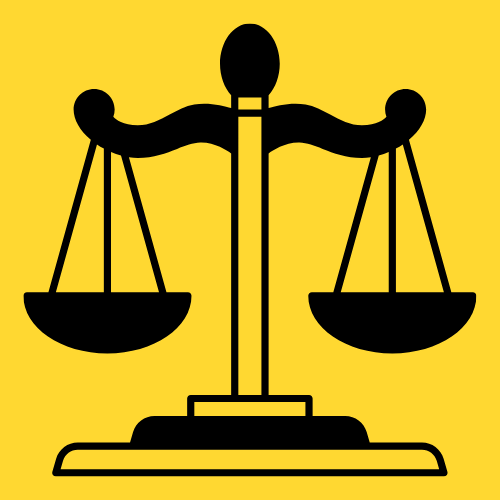SAIDI HATIBU v REPUBLIC 1984 TLR 280 (HC)
Court High Court of Tanzania - Mtwara
Judge Samatta J
August 24, 1983
CRIMINAL APPEAL 66 OF 1980 H
Flynote
Evidence - Confessions - Plea of guilty of a co-accused implicating the other - Whether a confession which can be taken into consideration against that other person - S.33(1) Evidence Act,1967.
Evidence - Identification - Appellant identified in a bush from a distance of about one hundred yards - Whether safe to act on such evidence.
-Headnote
The appellant was convicted of cattle theft. The trial magistrate relied on two pieces of evidence to convict B the appellant. He relied on a plea of guilty of a co-accused which implicated the appellant and an identification evidence of a witness who said that he saw the appellant and his co-accused in the bush from a distance of about one hundred yards driving some head of cattle. The High Court considered C whether or not the two pieces of evidence could support conviction.
Held:
(i) A plea of guilty is a confession of fact and may be made use of as provided for in s.33(1) of the Evidence Act, 1967 provided it is proved;
(ii) the use of the word "proved" in s.33(1) of the Evidence Act would tend to suggest that evidence must be adduced to establish that the plea was made;
(iii) in this case it was not permissible to invoke the provisions of s.33(1) of the Evidence Act against E the appellant because the plea of guilty of the co-accused was not proved; (iv) it was unsafe for the trial magistrate to have accepted the identification evidence because the distance was quite long and the fact that the man was in a bush.
Case Information
Appeal allowed
No case referred to.
G L.K.N. Kaduri, for the Republic.
[zJDz]Judgment
Samatta, J.: This is an appeal from a decision of the Dstrict Court of Masasi district whereby the appellant, SAIDI HATIBU, was convicted of cattle theft, contrary to s.268 of the Penal Code, and was sentenced to a H term of five years' imprisonment. The appellant was jointly charged with one Issa Abdallah, who was convicted upon his own plea of guilty which was couched in the following terms: "It is true that I stole 9 cows and 2 bulls [of] the value of shs.17,600/=. I was together with Saidi Hatibu who is [the] second accused in this case". The trial of the appellant commenced after Issa Abdallah had been sentenced. The latter, however, was not called as a witness by the prosecution, and no evidence was adduced at the trial to prove that, in his plea of guilty, Issa Abdallah had implicated the appellant. The evidence at the trial conclusively established, I think, that, on the night of March 2/3 1980, eleven head of cattle belonging to one Mr. Mauruge Alfani were stolen.
The only evidence given at the trial B touching upon the appellant was that of PW3, Mr. Michael Hassani, who testified to the effect that, on the morning of March 3, 1989, while he was at his shamba, he saw the appellant and his co-accused in the bush driving some head of cattle. The witness said that he saw the appellant at a distance of about one C hundred yards. The learned trial magistrate accepted this evidence in its entirety. In arriving at his decision he took into consideration the plea of guilty which the appellant's co-accused had made. He rejected the appellant's testimony which amounted to no more than a general denial of the charge laid at his door. D Mr. Kaduri, counsel for the Republic, declined to support the learned trial magistrate's decision. He conceded that the quality and quantity of the evidence in the scale against the appellant did not warrant the conclusion the learned magistrate arrived at. With respect, I approve this concession. Although Mr. E Michael Hassani - according to his evidence - knew the appellant before March 3, 19890, it was, in my opinion, unsafe for the learned trial magistrate to have accepted the witness alleged identification of the appellant.
According to the witness, he saw the appellant at a distance of about one hundred yards. This F is quite a long distance, and when the fact that the man was in a bush is also taken into consideration, I think the possibility of error cannot safely be excluded. In reaching his impugned decision, the learned magistrate, as already pointed out, also acted on the appellant's co accused's plea of guilty. With due respect to the learned magistrate, I think he erred in law in doing so. But why am I of this view? This G question I will endeavor to answer. It is perfectly correct to say that a plea of guilty is a confession of fact. The rules of evidence regarding confessions are, therefore, applicable to it. Thus, for example, it may H be made use of as provided for in s.33(1) of the Evidence Act, 1967, which I proceed to read: When two or more persons are being tried jointly for the same offence, or for different offences arising out of the same transaction, and a confession of the offence or offences charged made by one of those persons affecting himself and some other of those persons is proved, the court may take that confession into consideration against that other person. It is elementary law, I think, that an arraignment does not form part of the trial.
The need for a trial arises B only if the accused has joined issue with the Republic or the prosecutor (where the prosecution is a private one) by pleading not guilty. Where, therefore, the accused pleads guilty and is convicted, as happened in the present case, he cannot be said to be on trial. If the accused is not on trial, how can he possibly be said to be jointly tried with his co-accused? C It was note Evidence Act against the appellant. It is tempting to part with the case there, but I think it proper to add one word. It is doubtful that a plea of guilty made by the accused can be taken into consideration against his co-accused without the same being D proved during the trial by the testimony of a person who was present in court and who heard the plea being made. The use of the word "proved" in s.33(1) of the Evidence Act would tend to suggest that evidence must be adduced to establish that the plea was made. This would appear to be so even if the magistrate who took down the pleas is the same who later tried the co-accused. Of course the testimony E would rarely be necessary, because ordinarily the prosecution would call the accused as their witness against his coaccused.
For reasons which are not apparent on the record of the case, the prosecution did not call the appellant's co-accused as their witness. I hope it is not because the prosecutor thought he F could not in law do so. If that was the reason, I must hasten to point out that the belief was unfounded in law. It is a correct proposition of law, of course, that an accused is not a competent prosecution witness; the prosecution cannot call one co-accused to give evidence against another. But once the proceedings G have been finalised, it is competent for the prosecution to call the accused as their witness against the remaining accused person/s. There is no objection in justice or reason to that being done, because the accused is then no longer in the proceedings. H It is not without respect that, for the reasons I have endeavoured to give, I am unable to persuade myself to share the learned trial magistrate's opinion that the appellant's alleged guilt was established beyond reasonable doubt.
Appeal allowed.
1984 TLR p284
A

%20(27).png)
%20(10).png)





0 Comments
PLACE YOUR COMMENT HERE
WARNING: DO NOT USE ABUSIVE LANGUAGE BECAUSE IT IS AGAINST THE LAW.
THE COMMENTS OF OUR READERS IS NOT OUR RESPONSIBILITY.